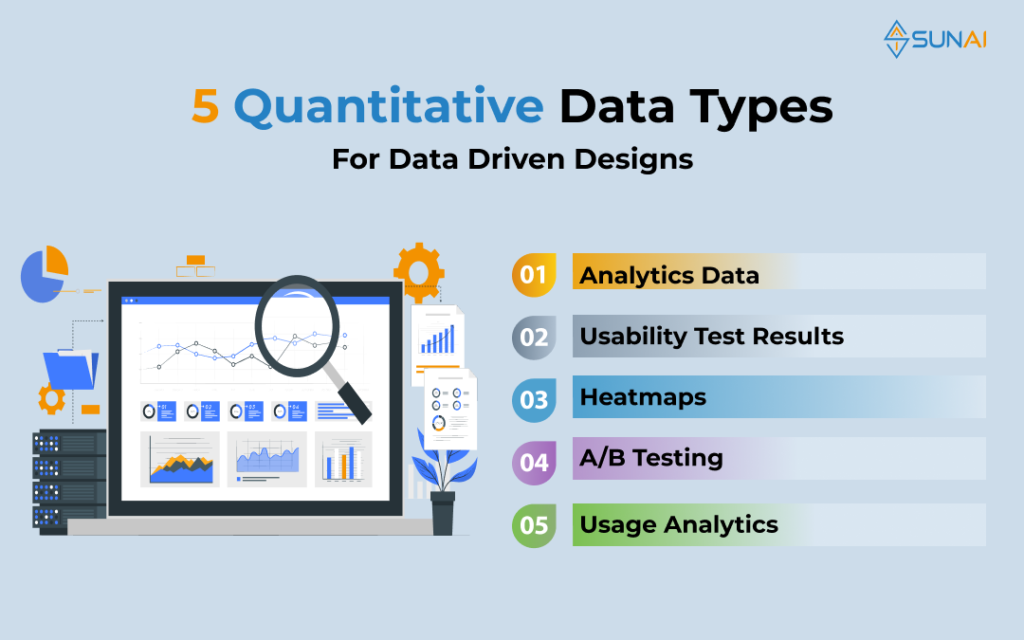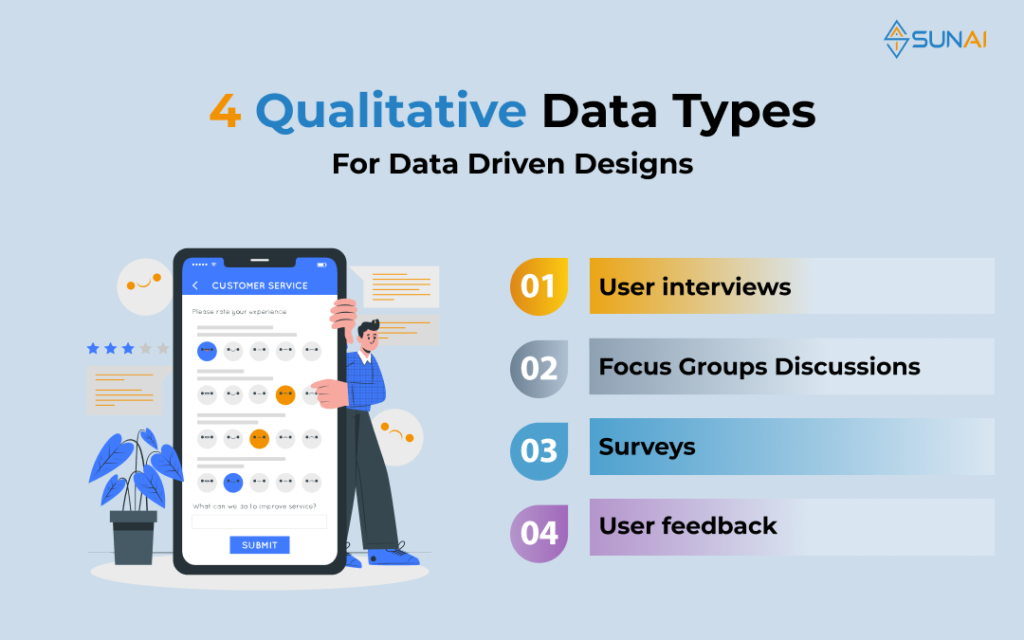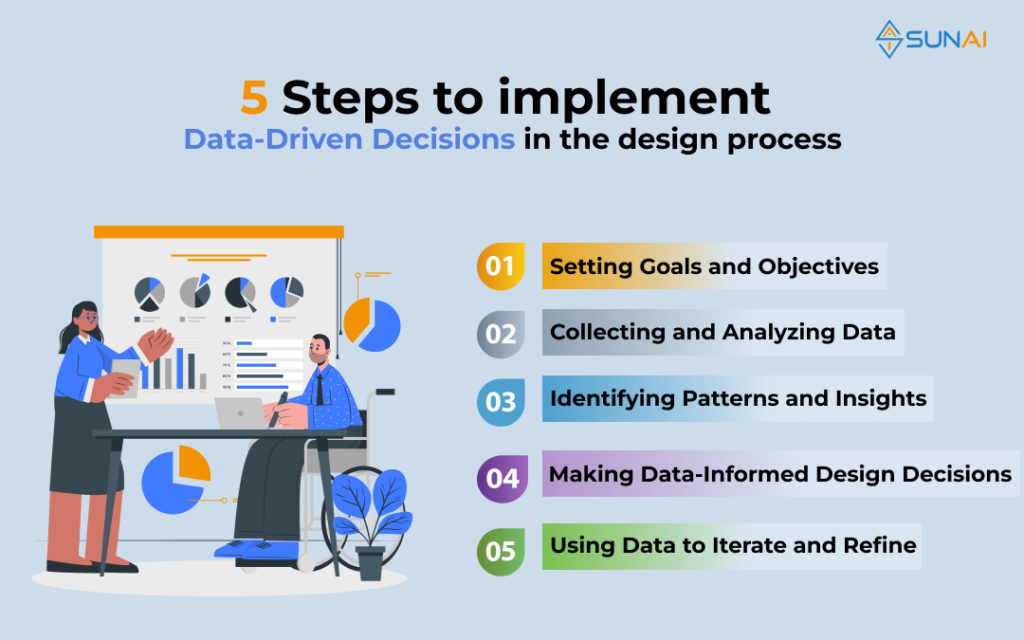In today’s digital landscape, successful design decisions are not solely based on intuition or personal preferences. Designers must rely on data to create user-centric experiences that meet the needs of their target audience. This approach, known as data driven design, has gained significant traction in the industry for its ability to inform and shape design decisions using insights gleaned from user behavior and preferences. By leveraging analytics, designers can unlock the full potential of their designs and deliver improved UI/UX. In this article, we will explore the concept of data-driven design, the types of data used, and how to implement data-driven decisions in the design process.
What is Data-Driven Design?
The data-driven design methodology entails making design choices based on data gathered by designers. It is a process that emphasizes the use of quantitative and qualitative data to inform design choices, rather than relying on subjective opinions or assumptions. By analyzing user behavior, preferences, and other relevant data, designers can gain valuable insights into what works best for their target audience. This approach ensures that design decisions are rooted in evidence and are more likely to result in successful outcomes.
Types of Data for Design
Data-driven design relies on two main types of data: quantitative and qualitative. Each type of data provides unique insights into user behavior and preferences.
Quantitative Data

Quantitative data is objective and measurable, often represented by numbers or values. It provides designers with valuable insights into user interactions and behavior. Examples of quantitative data include:
- Analytics data: Tools like Google Analytics or Mixpanel provide information on page views, click-through rates, and bounce rates.
- Usability test results: These tests measure task completion times and user success rates.
- Heatmaps: Visual representations of user interactions on a website or product, showing where users click or spend the most time. A tool like Hotjar is famous for it.
- A/B testing: Testing two or more design variants to determine which performs better. Some widely used tools are Adobe Target & Optimizely
- Usage analytics: Data collected from user interactions with a product or service, providing insights into navigation patterns and feature usage.
Qualitative Data

Qualitative data is subjective and provides insights into the “why” behind user behavior. It focuses on gathering user opinions, feelings, and motivations. Qualitative data is obtained through methods such as:
- User interviews: One-on-one conversations with users to gather their perspectives and insights.
- Focus groups: Group discussions that provide a platform for users to share their experiences and preferences.
- Surveys: Written feedback from users about their product experiences and opinions. Hotjar is a great tool used for custom and modern surveys.
- User feedback: Insights and feedback are gathered from various research methods, such as surveys, interviews, and usability testing.
Combining quantitative and qualitative data provides a comprehensive understanding of user behavior and preferences, enabling designers to make informed decisions.
Important Data Sources for Designers
To gather the necessary data for data-driven design, designers rely on various tools and methods. Here are some essential data sources for designers:
Analytics Tools
Analytics tools like Google Analytics, product metrics, and social media analytics provide designers with valuable quantitative data. These tools offer insights into user behavior, demographics, and engagement, helping designers identify areas for improvement and optimize the user experience.
User Surveys & Interviews
User surveys and interviews are crucial for collecting qualitative data. By directly engaging with users, designers can better understand their needs, pain points, and preferences. This data helps inform design decisions and ensures a user-centric approach.
A/B Testing
A/B testing, also known as split testing, involves comparing two or more design variants to determine which performs better. Designers use A/B testing to make data-driven decisions about design layouts or elements.
Usability Testing
Usability testing allows designers to observe users as they interact with a product, identifying any usability issues. By directly observing user behavior, designers can make informed decisions to improve the user experience.
Heatmaps & Click Tracking
Heatmaps and click-tracking tools provide visual representations of user interactions on a website or app. These tools help identify popular elements and areas where users may struggle, allowing designers to make data-driven design decisions.
Multivariate Testing
Multivariate testing allows designers to test multiple variables simultaneously within a single test. By comparing different design elements, designers can identify the most effective combination for optimizing user behavior.
By utilizing these data sources, designers gain valuable insights that inform their design decisions and lead to improved UI/UX.
Also Read
Challenges and Limitations of Data Driven Design
While data-driven design offers numerous benefits, it also presents challenges and limitations that designers must navigate.
Data Collection and Privacy Concerns
One challenge in data-driven design is balancing the collection of valuable user data with privacy concerns. Designers must ensure they comply with data protection regulations and respect user privacy. Adopting privacy-by-design principles, collecting only necessary data, and obtaining explicit user consent are essential steps in addressing these concerns.
Potential Data Biases
Data biases can arise from various sources, such as sampling errors or pre-existing beliefs. These biases may lead to incorrect conclusions and negatively impact design decisions. To reduce biases, designers ought to aim for diverse and inclusive samples, validate data from multiple sources, and consistently challenge their assumptions.
Misinterpreting Data and Making Incorrect Assumptions
Misinterpreting data or making incorrect assumptions can result in flawed design decisions and a suboptimal user experience. Designers should approach data analysis with a clear understanding of its context and limitations. Verifying findings through multiple sources and involving domain experts and users in the design process can help ensure accurate interpretations.
Implementing Data-Driven Decisions in the Design Process

To effectively implement data-driven decisions in the design process, designers can follow these steps:
Step 1 – Setting Goals and Objectives
Before gathering and evaluating data, designers need to define explicit goals and objectives. They can achieve this by pinpointing key performance indicators (KPIs) that correspond with user requirements and business goals. This approach allows designers to concentrate on the most influential aspects of the product or user experience.
Step 2 – Collecting and Analyzing Data
Once goals and objectives are established, designers collect relevant quantitative and qualitative data from various sources. Rigorous analysis methods ensure accurate conclusions and reliable insights.
Step 3 – Identifying Patterns and Insights
Designers look for patterns and insights in the collected data to inform their design decisions. Identifying user pain points, preferences, and behavior trends helps designers better understand user needs and make informed decisions throughout the design process.
Step 4 – Making Data-Informed Design Decisions
With valuable insights in hand, designers can make data-driven decisions to address user needs and meet business objectives. This involves iterating on the design, incorporating user feedback, and refining the product based on data. Designers must remain adaptable and open to adjusting or changing directions based on new data.
Step 5 – Using Data to Iterate and Refine
Throughout the design process, designers should measure the impact of design changes and continually iterate. Monitoring KPIs and gathering ongoing user and stakeholder feedback enables designers to refine the design, optimize the user experience, and achieve desired results.
Balancing Data Driven Design with Creativity and Intuition
While data-driven design is essential for creating user-centric solutions, designers must also balance it with creativity and intuition. Intuition and creativity play a crucial role in generating innovative solutions and thinking outside the box. Relying solely on data may result in generic or unimaginative designs. Designers ought to utilize data to inform and substantiate their decisions, all the while relying on their instincts and expertise to steer the design process.
Avoiding over-reliance on data ensures designers can explore alternative solutions and create distinctive experiences that meet users’ unique needs.
Data-Driven UX Design With SUNAI
SUNAI is a software development outsourcing company that also provides Product Design services with talented developers and designers. SUNAI enables designers to build prototypes that look and feel like the final product, gather actionable feedback, and iterate, and refine ideas throughout the design process. By creating interactive prototypes, designers can make data-driven design decisions using the tools provided by SUNAI to test and validate design choices. Contact us now to learn more about our product design service.
Conclusion
Data-driven design is a powerful approach for improving UI/UX by leveraging insights from user behavior and preferences. By incorporating quantitative and qualitative data into the design process, designers can make informed decisions that result in more user-centric experiences. While data is crucial, designers should also embrace creativity and intuition to create innovative solutions. With the right balance between data-driven design and creativity, designers can deliver exceptional UI/UX that meets the needs of both users and businesses.







0 Comments